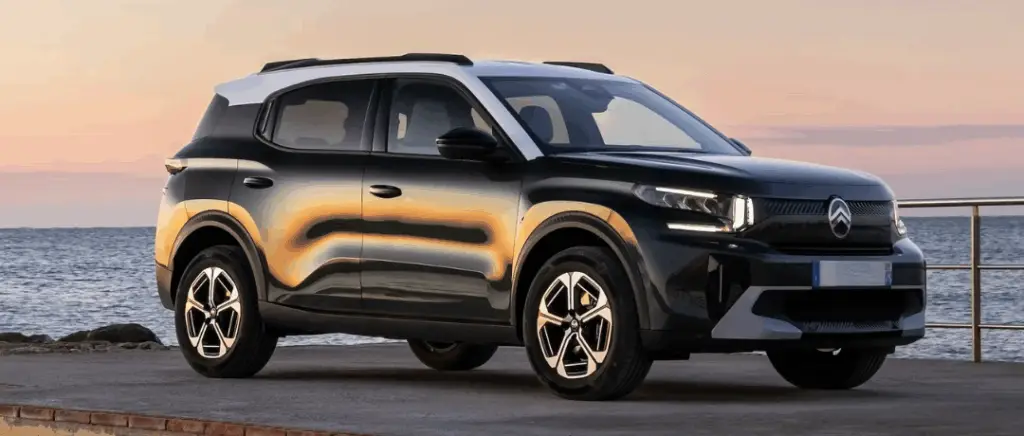Monday to Friday
9am - 12.30pm - 2pm - 7pm
Installing charging points in new buildings: between obligations... and opportunities
Although sales are at the heart of their business, the role of a property developer goes far beyond the commercial aspect. From drawing up invitations to tender to supervising the work, this professional is responsible for the construction until it is completed and delivered on time. As the guarantor of the quality of the work, but also of its compliance with current standards, they must pay particular attention to the laws that regulate construction and town planning. Recent years have seen major changes in these areas. Some of these concern the integration of IRVEs in new buildings for residential use.
Charging stations for property developers: the regulatory framework
The LOM law
La LOM law or Mobility Orientation LawThe aim of the new scheme, which comes into force in November 2019, is to promote the energy transition and the development of more sustainable modes of transport.
Since 11 March 2021, it has been compulsory to be pre-equipped with charging stations in new residential buildings.
This obligation is described in Article L113-11 of the French Housing Code.
The design of the structures must allow for the installation of cable ducts and the power supply devices required for the installation of electric vehicle charging stations.
In other words, this obligation does not relate directly to the installation of IRVEs. However, it can be seen as a step towards their deployment in all collective residential buildings. The "pre-works" carried out are intended to facilitate the subsequent installation of charge points.
Charging points: what are the implications for property developers?
In car parks with more than 10 spaces, a recharging point must be provided for 1 in every 5 spaces. In addition, the law requires at least 2 % spaces to be adapted for people with reduced mobility (PRM), with a minimum of one such space.
The pre-wiring of parking spaces in residential car parks must allow charging stations to be installed on site, after the building has been handed over. This means that the ducts and cable ducts will be "ready to use" and that the electrical installation chosen must be capable of supporting several simultaneous recharges.
It should also be possible to isolate and/or account for each resident's electricity consumption, with a view to individual or shared billing, depending on the model chosen.
There are exemptions for certain new condominiums. The pre-wiring obligation applies under certain conditions:
- the co-ownership must comprise a minimum of two lots;
- it must have a car park.
Read also→ Guide - Charging points in condominiums
What the Construction and Housing Code says
Article R111-14-2 sets out the conditions for application of the LOM law and the rules to be followed for installation:
- The cable ducts serving the parking spaces must be large enough. The standard sets a minimum cross-section of 100 mm.
- Charging points can be supplied by the building's low-voltage switchboard or by the public electricity network located on the building's right of way. If the supply comes from the public network, the installation site must allow for connection to earth close to the conduits provided for the cables to pass through.
- Whichever solution is chosen, the electrical installation must supply at least 20 % of pre-equipped parking spaces, with a minimum requirement of one space.
- Finally, the configuration of car parks designed to accommodate a recharging point must allow the deployment of a supervision system of IRVE.
In addition, the electrical installation in residential buildings must also supply a minimum power (reserve power) that depends on the number of parking spaces equipped:
| Nombre de stationnements disponible | Valeurs minimales de la puissance de réserve |
|---|---|
|
10 à 20
|
15 kVA
|
|
21 à 40
|
22 kVA
|
|
41 à 100
|
30 kVA + 6 kVA for every 10 pitches over 50
|
|
101 à 200
|
60 kVA + 3.6 kVA for every 10 pitches over 100
|
|
More than 200
|
96 kVA + 0.2 kVA per additional parking space
|
What are the benefits?
In addition to the regulatory constraints laid down in the LOM law, charging stations for electric vehicles are among the facilities that can enhance the appeal of a new-build development. Rather than simply anticipating the installation of these facilities, deploying them before handover is a real commercial advantage.
As a property developer, you know the extent to which certain details can influence potential buyers' decisions. Visit charging stations for electric vehicles are just some of the functional, but also valuable, features that can help buyers to plan their future property.
So taking the initiative to install recharging points before construction starts can have a number of benefits.
Such immediately available equipment will bring undeniable added value to your property developments. Residents will be able to take advantage of a car park that's already equipped, and won't have to worry about all the paperwork involved in installing charging points. Users who already own an electric vehicle won't have to wait for the union council's agreement and a vote at the General Meeting to approve the deployment of the infrastructure. This extra selling point will certainly help you to convince even the most hesitant buyers!
It has to be said that electric vehicles are gaining ground, with forecasts of more than 1.5 million electric vehicles by 2010. 5 million drivers by 2030. This momentum will undoubtedly be reinforced in the years to come with the recently voted ban on the sale of combustion engine cars in the European Union, which will come into effect in 2035.
It is therefore crucial that new housing provides concrete solutions to the eco-mobility trend. And that logically means deploying infrastructures that allow users to recharge their vehicles at home.
Lastly, charging stations for electric vehicles are among the new facilities that reflect an image of modernity and comfort for users, while at the same time addressing major social concerns. The development of clean vehicles is an important condition for reducing greenhouse gas emissions. And property developers also have a role to play in achieving this objective. By promoting programmes that encourage soft mobility, these professionals are no longer content simply to apply the regulations. They are becoming players in a more virtuous urban development policy, going beyond simply responding to legislation.
Our Beev experts will propose a package tailored to your needs and your projects.
Apply now!
Property developers: what type of terminal should you choose for a residential building?
The choice of terminals in a residential building depends on a number of criteria. The main imperative is to define the needs of users in terms of power and ease of use, which requires an in-depth analysis beforehand. The questions to ask concern theautonomy power, technical aspects and possible options.
Also read → Which charging point do you need?
The autonomy you need to get around
Although there may be disparities linked to individual use, the geographical location of the building can be used as a reference point. It can be assumed that residents of buildings in the heart of conurbations travel less. On the outskirts of cities, drivers cover more kilometres on a daily basis. The terminal power therefore needs to be adapted accordingly to offer faster recharging. You can use these estimates as a reference:
- 3.7 kW terminal: 15/20 km of range recovered per hour of charging,
- 7.4 kW terminal: 30/40 km of range recovered per hour of charging,
- 11 kW charging point: 60/70 km of range recovered per hour of charging,
- 22 kW charging point: 100/150 km of range recovered per hour of charging.
Good to know : Modular power charging stations (normal to accelerated charging stations) can deliver several power levels: 3.7 kW, 11 kW or 22 kW. This is the ideal option when drivers' needs and the vehicle's charging capacity cannot be accurately predicted.
Essential options</
In open car parks, it is preferable to opt for a RFID charging point (Radio Frequency Identification). Thanks to badge-based access control, the terminals can only be unlocked and used by residents, limiting the risk of fraud or misappropriation in the event of intrusion.
Another advantage: the RFID chip makes it easier to set up a supervision system designed to facilitate charging invoicing, while providing invaluable information about the condition of the charging point. The billing management system also makes it possible to avoid the constraints associated with sharing charges between co-owners, including those who do not wish to be equipped. In this case, each user can regulate their consumption independently.
Are future owners legitimately worried about the management and billing of top-ups? You can reassure them: Beev offers an intuitive and practical billing tool to enable everyone to manage chargepoints remotely. Discover our charging point supervision service.
Compatibility with electric vehicles
Most normal to accelerated charging points on the market have a type 2 socket, which is compatible with all categories of electric vehicle. You should be aware that there are standards that guarantee a perfect fit between the charging point and the electric vehicle, such as the European EV Ready label. Le ZE Ready label includes 52 control points covering both equipment and installation standards.
Which charging point is right for a single-family home?
Although IRVE equipment is less frequently mentioned in the context of property developments for single-family homes, its deployment can generate significant added value. There is no obligation to pre-equip this type of home. However, developers can provide pre-cabling. Installing a charging point is a little more risky, because it is difficult to cover the hypothetical uses and needs of future occupants. But preparing the technical elements will save a lot of time and avoid the costly work of bringing the electrical installation up to standard.
The obligation to use a certified professional
Whether it's a question of pre-equipping or installing charging stations in a residential building, you can't use just any professional. It is essential (and compulsory) to use an electrician with IRVE qualifications, issued by an accredited body.
Le decree of 12 January 2017 specifies that the obligation is waived for sockets with a power rating of 3.7 kW or less located in a residential building... provided that their main function is not to charge electric vehicles. In other words, it's best to choose a qualified electrician upstream of the project, to ensure the safety of users and compliance with current regulations.
Why delegate the installation of charging points in a residential building?
Deploying recharging infrastructure raises a number of technical and administrative issues that you may not have the time to address and incorporate into your property programmes.
Delegating the installation of charging points will allow you to concentrate on your core business. From the choice of infrastructure to commissioning by a qualified, IRVE-certified electrician, Beev takes care of everything and offers you dedicated assistance. Make an appointment with an advisor to make your project a reality!
































